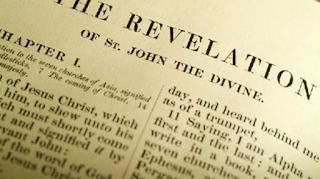An Ancient Story (The Setting of Esther)
An ancient story...
Esther is a book which has a most unusual setting. It is the last of the "historical" books of the Old Testament. Meaning that while there are other books which were written after Esther (Such as many of the Minor Prophets), the events of Esther detail the most recent day to day events in the Old Testament. The events of Esther begin roughly 483 BC and continue through 473 BC (Remember that BC counts down, whereas AD counts up). You can view a detailed timeline with verses supporting the given dates by clicking here.
Some notable parts of history that may float in your mind either from history classes or popular culture are as follows:
- Julius Caesar (Lived from 100-44 BC) - the one whom the title Caesar is named after.
- The "Iron Age" lasted from roughly 1200-500 BC in the Ancient Near East.
- The birth of Jesus in Bethlehem was most likely between 2 BC to 4 AD.
- The Roman Colosseum was built 70-80 AD.
- The Romance of the Three Kingdoms (A masterpiece of Chinese History and Myth) recounts events from 169-280 AD.
Why were the Israelites not in Israel?
Due to the sin of God's people for multiple generations, God allowed external empires to conquer his people and carry them into a period of captivity. Everything that the Old Testament people of God had thought made them great was stripped away. The Palace of Solomon was destroyed, the Temple of Solomon and the walls which the people had thought kept Jerusalem safe (It was truly the Lord all along who kept his people safe) were demolished. The false gods whom had crept in and become a part of the worship of the people were caught in the destruction as well. The high places (Often times places of higher elevation were used for pagan worship, I recommend you read this short piece by Adam Couturier for more details on the significance of these places of worship) had been established by God's people to worship foreign gods rather than destroyed per God's commands (Deuteronomy 12:2-5). God's people had repeatedly, for generations, disregarded, ignored, and utterly rejected God's Ways and God's Word.
The quick summary is as follows:
- God rescued his people from Egypt after a period of their enslavement (Exodus 1-2 & 12-13)
- God instructed his people on how to live in relationship with one another, and with God himself (See Exodus 14-40 and the entire books of Deuteronomy, Leviticus and Numbers)
- God's people rejected God's ways and God's Word so many times, that he allowed them to live in the wilderness for 40 years before entering into the land God had promised to their forefathers: Abraham, Isaac, and Jacob.
- God's people rejected God's strategy and tactics for conquering the promised land. The people live in a precarious state as victims of remaining enemies due to their rejection of God's strategy and tactics (See Joshua 7-24 and the entire book of Judges).
- God established leaders for his people (Judges, Prophets, and Kings) while the people, time and time, again rejected God's Ways and God's Word (See 1 & 2 Samuel along with 1 & 2 Kings and 1 & 2 Chronicles)
- Through a period known as the "exile" God removed some of his protection for his people and allowed them to suffer a military conquest which led to many captives taken to live in Babylon (2 Kings 25).
- After a 70 years in exile, God uses foreign kings such as Cyrus, Artaxerxes, and Darius, to allow God's people to return to their homeland, govern themselves, rebuild their cities, and defenses. Perhaps the most tangible way we know God was at work in this, is that Cyrus, Artaxerxes, and Darius ALL FUNDED this return! When have 3 different political administrations ever seen fit to agree on anything, let alone fund something!
- A little over 100 years after the first conquest of ancient Israel by Babylon the events of Esther take places.
I'm stoked for more of what God will teach me from Esther!


Comments
Post a Comment